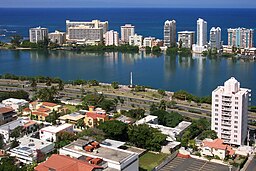Since 2005, persons who wish to file a Chapter 7 bankruptcy case need to qualify first, passing a means test that compares their recent income to the average income and expenses in the area where they live. This means test applies to all Chapter 7 cases of individuals that involve primarily consumer debts.
This begs the question: what exactly is consumer debt?
While credit card purchases would be an obvious slam-dunk example, a bankruptcy appellate panel of the First Circuit court of appeals dived into some of the thornier issues and close calls involving the definition of consumer debt in the appeal of Ada Conde – Vidal.
(Bankruptcy appellate panels are groups of three bankruptcy judges that decide contested appeals of rulings from a bankruptcy court).
The Conde – Vidal case involved a dispute between two neighbors in a condo building in Mirimar, Puerto Rico concerning noisy pets. A lawsuit in the local court resulted in a court order that Ms. Conde _ Vidal was to pay the attorney fees of the lawyer for the neighbor that was suing her. Meanwhile, her wife filed for Chapter 13 bankruptcy. Conde – Vidal could have joined her filing and made it a joint case with two married debtors, but she did not.
Instead, Conde – Vidal decided to rely on the “co-debtor stay” provisions of the bankruptcy code to protect her from collection activity by her neighbor’s attorneys. The co-debtor stay is a special clause in Chapter 13 cases that extends some bankruptcy relief to co-signers as well as the primary debtor in the case.
The catch: a co-debtor stay, like the means test, applies only to cases that involve primarily consumer debt.
The First Circuit B.A.P. found however, that attorney’s fees imposed by a court order did not count as consumer debts. The reasoning is that the hallmark of a true consumer debt is that it is voluntarily entered into by the debtor. In this case, the bill for legal fees was imposed against Conde – Vidal and her spouse over their objections in court, so the debt was deemed not voluntary, and therefore, not a consumer debt. Collections activity against Conde – Vidal as a co-debtor were therefore allowed to continue.
This case points to the next big issue that is likely to arise in this legal area: medical debts. Are they consumer debts or not? On the one hand, most people voluntarily seek medical help from a doctor or hospital when they need to. On the other, few people voluntarily wish to be sick or injured; it happens, then they seek help.
For the resolution of this issue in the bankruptcy courts of the First Circuit, we will have to stay tuned.
